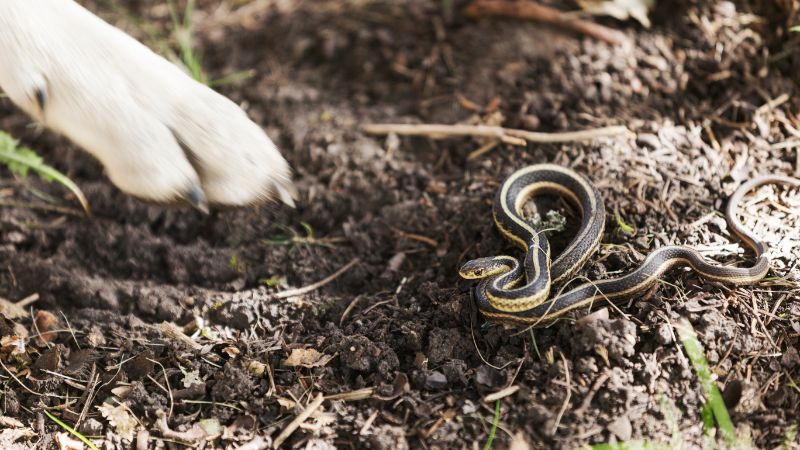Do You Know How to Keep Your Pet Safe From Snakes?

Snake encounters are just a part of life in California, and yet, few of us are truly primed to handle them.
While people may go out of our way to avoid snakes,, a pet’s predatory instincts may be triggered if they detect unexpected movement or sound in their immediate environment. Unbeknownst to the pets in hot pursuit of an unknown intruder, snakes have amazing defense mechanisms, including painful, venomous bites.
Every year, approximately 150,000 venomous snake bites occur every year in cats and dogs. Some cases are fatal, but not all bites contain venom (known as “dry bites”). This is hardly consoling for a pet owner that simply wants to keep their pet safe from snakes.
The Stuff of Nightmares
Cortlands, or pit vipers, are found throughout the United States. Our chief threat in California is, of course, the rattlesnake. If your pet is bitten with venom, swelling, discoloration, and skin sloughing are common indicators. If untreated, you may see vomiting, diarrhea, low blood pressure, irregular heart beat, fluid in the lungs, shock and death.
Venom of certain crotalids, such as Mojave or canebrake rattlesnakes, affect the neural system, so you may not necessarily see a reaction to tissue around the bite. Look for muscle twitching instead.
Closer Look
Sometimes a snake bite isn’t directly witnessed, and the symptoms can be mistaken for other problems. Also, fang marks don’t always mean that a pet has received venom, so keep an eye on swelling. In any case of a known or suspected snake bite, emergency care is required.
Setting the Scene
Providing quick help is an important component of keeping your pet safe from snakes. Often, blood tests and urinalysis can reveal the extent of potential damage from venom. Applying test results to a severity score can determine the course of treatment that may involved:
- Antivenom (used mostly with rapid swelling or shock)
- Close observation
- IV fluids or analgesics
- Ventilation
Depending on the severity, a pet can recover if they receive immediate intervention. Long-term effects can occur from tissue damage or swelling of the extremities.
Is My Pet Safe From Snakes
Many pet owners question their pet’s safety regarding snakes. To help with this, we recommend the following tips:
- Avoid known snake habitats, such as flat rocks, wood and fallen logs
- Keep you property clear of areas that attract and protect snakes
- Train your pet to avoid known snake habitats, and be sure they know not to chase or threaten snakes
- Consider the rattlesnake vaccination for your pet
- Keep your pet on a leash when hiking on trails or exploring rocky river paths
- Keep you rpet moving in the opposite direction if you encounter a snake together
If you’re not sure what kind of snake you see on your property (or inside your home!), assume that it’s venomous and act quickly to avoid it.
If you have further questions regarding the ways to protect your pet from snakes, please contact us. Our team is always here for your pet at East Sacramento Veterinary Center.
